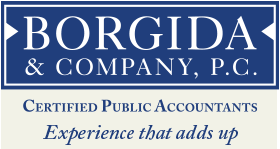 Deciding whether to open an IRA or a Roth IRA is a major decision with potentially large financial consequences. Both forms of the IRA are great ways to save for retirement, although each offers different advantages and rules.
Deciding whether to open an IRA or a Roth IRA is a major decision with potentially large financial consequences. Both forms of the IRA are great ways to save for retirement, although each offers different advantages and rules.
The deadline for making a 2010 contribution to an IRA is April 18, 2011. Before you make your contribution, see which plan you are eligible for and which one meets your financial goals.
Contributions to an IRA can be tax deductible depending on your filing status, your adjusted gross income ("AGI") and whether you are covered by a retirement plan at work. Your earnings grow on a tax-deferred basis. This means that you can reinvest all of your dividends and capital gains without paying taxes on them as you go. You are also free to make changes in your account without tracking each investment’s cost basis, gain, or loss for income tax purposes.
You must have earned income to make an IRA contribution. The amount of earned income you have must equal or exceed the amount of your IRA contribution. Withdraws can begin at age 59 1/2 and are mandatory by 70 1/2. The entire amount of the withdrawal is taxed as ordinary income at regular income tax rates. Non-Deductible IRAs are available to everyone under age 70 1/2 that have earned income.
Roth IRA
Contributions to a Roth IRA are not tax deductible.
The money you contribute to your Roth IRA grows tax-free. You do not have to pay any taxes on the earnings in the account, even when you withdraw it. This is if the account is open for at least five years and you are over age 59 1/2 when you withdraw. You must have earned income to make a Roth IRA contribution. The amount of earned income you have must equal or exceed the amount of your Roth IRA contribution.
Below are the 2010 income limitations on who can contribute to a Roth IRA:
* For single filers, your ability to contribute to a Roth IRA is phased out as your AGI reaches the range of $105,000 – $120,000.
* For married filing jointly, your ability to contribute to a Roth IRA is phased out as your AGI reaches the range of $167,000 – $177,000.
If you are eligible to make a Roth IRA contribution based on the rules above, then you can contribute to a Roth IRA in addition to your company sponsored retirement plan. There is no mandatory distribution age or required minimum distribution.
ACTION ITEM: Know the difference between an IRA and a Roth IRA.
Thomas F. Scanlon, CPA, CFP®
Photo From Creative Commons



Tax date is coming soon. A licensed tax lawyer can truly make a difference. Moreover, if you are audited by IRS, he can help you defend yourself for your best interest. I believe the tax day 2011 is April 18th instead of April 15th so you have three more days to get yourself prepared.
Valerie,
That is correct, the due date for 2010 tax returns is April 18, 2011.
Tom
Thanks for sharing, I`ll come back and check one of the other posts you have written.
In “The Gospel of Roth- The Good News About Roth IRA Conversions and How They Can Make You Money” by John Bledsoe it clearly states in the book that NO ANALYSIS is needed and that everyone should convert to a Roth IRA regardless of income. There is NO risk! The IRS is giving us a year to recharacterize or “undo” the conversion. This book gives the ins and outs for Roth IRAS!